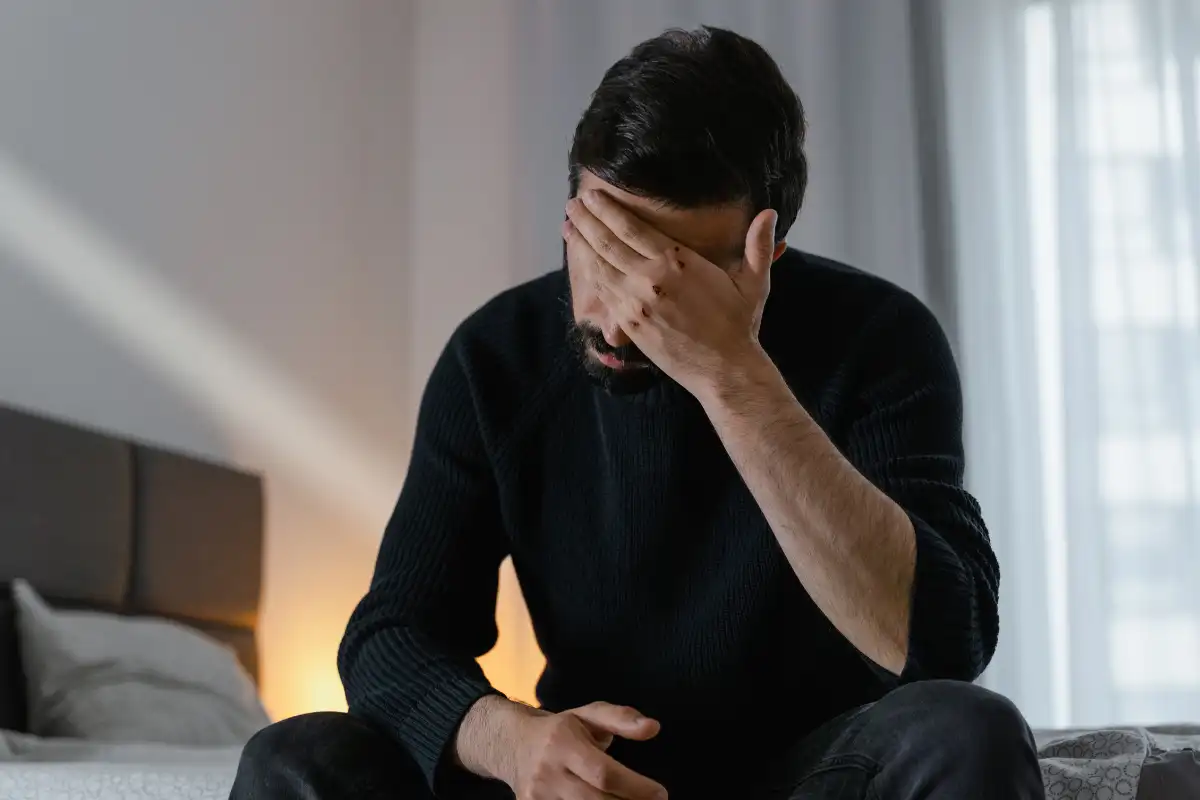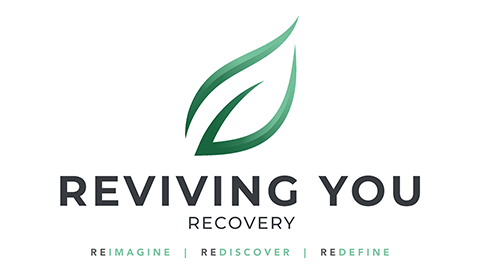What is Seasonal Affective Disorder and How Do I Avoid it in My Recovery?

Recovery is about more than just giving up drugs or alcohol — it’s about rebuilding your mind, body, and spirit. But sometimes, external factors like the weather and the changing seasons can make that process harder than expected. One of the most common yet often overlooked challenges during recovery is Seasonal Affective Disorder (SAD) — a type of depression that typically occurs during the darker, colder months of the year.
At Reviving You Recovery, located in Menifee, California in the heart of the Temecula Valley, we understand how the environment plays a powerful role in healing. Our warm, sunny climate and uplifting surroundings provide a natural boost for emotional well-being — something especially important for individuals who may struggle with seasonal mood changes.
In this article, we’ll explore what Seasonal Affective Disorder is, how it impacts addiction recovery, and why choosing a warm-weather recovery destination like Southern California can make all the difference in your journey toward long-term sobriety.
Understanding Seasonal Affective Disorder (SAD)
Seasonal Affective Disorder is more than just the “winter blues.” It’s a form of clinical depression that follows a seasonal pattern, most commonly appearing during the fall and winter months when daylight hours are shorter. People with SAD often feel sad, fatigued, or unmotivated, and these symptoms can interfere with everyday functioning — including maintaining recovery routines.
While the exact cause of SAD isn’t fully understood, several factors contribute to it:
- Reduced sunlight exposure: Less daylight can disrupt your body’s internal clock (circadian rhythm), leading to feelings of lethargy or sadness.
- Decreased serotonin production: Sunlight helps regulate serotonin, a neurotransmitter that influences mood. Reduced sunlight can cause serotonin levels to drop.
- Increased melatonin production: Darkness increases melatonin, a hormone that induces sleepiness — which can make you feel tired or sluggish during the day.
For those in addiction recovery, these seasonal shifts can be particularly challenging. Emotional lows, fatigue, and lack of motivation can trigger cravings or make it more difficult to stay engaged in treatment and aftercare.
Why SAD Can Be a Challenge in Recovery
When you’re early in recovery, your emotional stability is still fragile. The brain is recalibrating itself after prolonged exposure to drugs or alcohol, and even small changes in mood can feel magnified. For someone dealing with Seasonal Affective Disorder, the symptoms can overlap with post-acute withdrawal symptoms — things like fatigue, irritability, and depression.
This overlap can create confusion or discouragement. You might wonder, “Am I really struggling with SAD, or is this just part of recovery?” Unfortunately, the answer might be both. When depression worsens in the winter, it can:
- Lower motivation to attend therapy sessions or support meetings
- Increase the temptation to isolate or withdraw socially
- Heighten cravings as a way to self-medicate negative emotions
- Cause sleep issues that disrupt recovery routines
- Make it harder to feel gratitude, hope, or joy — essential emotions for long-term sobriety
That’s why it’s critical to understand SAD and have strategies in place to manage it — especially if you live in areas with long, cold winters.
The Connection Between Sunshine, Mood, and Recovery
Sunlight plays a major role in regulating the body’s natural rhythms and emotional health. Exposure to sunlight increases serotonin levels, improves sleep quality, and supports vitamin D production — all of which contribute to mental clarity and stability.
In contrast, lack of sunlight can worsen symptoms of depression and anxiety. This is one reason rehabs in warm, sunny locations like Menifee and the Temecula Valley see so much success — the environment itself helps people feel better physically and mentally. At Reviving You Recovery, we see firsthand how the Southern California climate supports healing. The consistent sunshine, open skies, and natural beauty of the area create an atmosphere of renewal and optimism — essential ingredients for long-term recovery success.
Why a Warm and Sunny Location Helps in Rehab
There’s something uniquely therapeutic about recovering in a warm, bright environment. Here’s how warm-weather treatment makes a difference for those healing from addiction:
1. Natural Mood Enhancement
Sunlight exposure stimulates serotonin production, naturally boosting mood and energy. Many clients notice that after spending just a few days outdoors in Menifee’s warm, sunny climate, they feel more optimistic and motivated.
2. Encouragement for Outdoor Activities
In colder climates, recovery often happens indoors. But in Southern California, clients can take advantage of outdoor therapy, yoga, hiking, and meditation under blue skies. Movement and nature are powerful antidepressants — they reduce stress hormones, increase dopamine, and promote mindfulness.
3. Improved Sleep and Energy
Sunlight helps regulate melatonin production, improving sleep quality. A good night’s rest allows your body to heal, sharpens focus, and helps stabilize emotions — all key parts of addiction recovery.

4. Sense of Renewal and Hope
There’s something symbolic about recovering in a place that’s always warm and bright. Sunshine represents hope and rebirth — two powerful metaphors for the recovery journey.
5. Reduced Isolation
In cold, dark environments, it’s easy to stay inside and isolate. But when the weather is beautiful year-round, it’s easier to connect with others — through outdoor group therapy, 12-step meetings, or simply socializing in serene surroundings.
6. Mind-Body Connection
At Reviving You Recovery, we emphasize holistic wellness — treating not just addiction, but the whole person. Sunshine and movement outdoors reinforce the idea that your body, mind, and spirit are interconnected, and all deserve care.
Get Your Questions Answered Now

Recognizing the Signs of Seasonal Affective Disorder
If you’re in recovery and you begin to feel down during the fall or winter, it’s important to recognize the early warning signs of SAD. Symptoms may include:
- Persistent feelings of sadness or hopelessness
- Low energy or constant fatigue
- Difficulty concentrating
- Changes in appetite or weight
- Oversleeping or trouble waking up
- Loss of interest in hobbies or social activities
- Irritability or anxiety
- Thoughts of using drugs or alcohol again
If you notice several of these symptoms lasting for more than two weeks, it’s crucial to reach out for help. At Reviving You Recovery, our mental health and addiction specialists can help you identify whether you’re dealing with SAD, depression, or post-acute withdrawal — and develop a treatment plan that keeps you stable and supported.
Managing Seasonal Affective Disorder in Recovery
Avoiding SAD doesn’t mean you have to move to a sunny climate (though it certainly helps!). There are also several practical strategies you can use to keep your mood and energy balanced year-round:
1. Maximize Sunlight Exposure
Try to get at least 20–30 minutes of natural sunlight daily, especially in the morning. Even sitting by a bright window can help.
2. Stay Physically Active
Exercise is one of the most effective ways to combat depression. It releases endorphins, increases dopamine levels, and reduces stress.
3. Maintain a Regular Schedule
Having consistent sleep, meal, and activity routines helps regulate your body’s circadian rhythm — which can be disrupted during darker months.
4. Eat Nutrient-Rich Foods
A balanced diet rich in fruits, vegetables, whole grains, and omega-3 fatty acids can stabilize your mood and energy.
5. Use Light Therapy if Needed
Light therapy lamps mimic natural sunlight and can help reduce SAD symptoms, especially in places with less daylight.
6. Stay Connected
Isolation can make depression worse. Attend meetings, connect with your support group, or talk to a counselor if you’re feeling down.
7. Practice Mindfulness and Gratitude
Mindfulness meditation and gratitude journaling can help you stay grounded and focus on the positives in your recovery journey.
The Reviving You Recovery Difference
At Reviving You Recovery, we’ve created an environment that naturally supports emotional balance and physical healing. Our Menifee, California location in the sunny Temecula Valley offers a peaceful, restorative atmosphere that encourages personal growth and long-term sobriety.
Our approach to treatment integrates evidence-based therapies with holistic wellness, including:
- Medically supervised detox to ensure safety and comfort during withdrawal
- Individual and group therapy to address underlying issues and develop coping strategies
- Holistic practices like yoga, mindfulness, and art therapy to promote emotional healing
- Outdoor activities and nature-based therapy that take advantage of Southern California’s year-round sunshine
- Aftercare planning to help clients stay connected, stable, and motivated after treatment

We understand that recovery doesn’t just happen inside therapy rooms — it happens in the mind, heart, and environment. That’s why we’ve designed a program that makes the most of our beautiful surroundings to nurture positivity and resilience.
Why Choose Menifee, California for Recovery
Menifee offers something truly special: a calm, scenic setting surrounded by rolling hills and sunshine nearly every day of the year. It’s close to major Southern California cities but far enough from distractions to allow full focus on healing.
Here’s why our clients say the Temecula Valley is the ideal place to recover:
- Consistent sunshine and mild weather make every day feel like a fresh start.
- Outdoor therapy options like hiking, equine therapy, and meditation help clients reconnect with themselves and nature.
- Peaceful surroundings create the space needed for self-reflection and growth.
- Proximity to the ocean, desert, and mountains allows for diverse, restorative experiences during treatment.
In short, Menifee’s climate and natural beauty help keep spirits high and minds clear — which can make a huge difference for anyone vulnerable to seasonal depression.
Bringing It All Together: The Light Ahead
Seasonal Affective Disorder doesn’t have to derail your recovery. With the right environment, support system, and tools, you can maintain emotional balance and continue moving forward toward a brighter future.
At Reviving You Recovery, we’ve seen countless individuals rediscover hope in the warmth of the Southern California sun. Whether you’re just beginning detox or rebuilding your life in long-term recovery, our team is here to walk with you — step by step, season by season.
If you’re ready to heal in a place that nurtures your body and soul, Reviving You Recovery in Menifee, California offers the ideal combination of professional care, holistic healing, and sunny serenity. Don’t wait for spring to feel better — the light is already here.
Reviving You Recovery
Warmth. Healing. Hope in the Temecula Valley.
Learn more about our programs or reach out today to start your journey toward lasting recovery under the Southern California sun.
We Accept Most Insurances
We are in network with:









We know insurance coverage can be a source of uncertainty for people. We make sure you have all the information necessary. The great news is health insurance can potentially cover the total treatment costs. If you don't have insurance, we offer cash payment options for our treatment programs and are committed to working with clients regardless of financial situations.
